Austria has long been one of Europe’s premier skiing destinations, attracting visitors with its perfect blend of snow reliability, alpine charm, lively après-ski, and competitive prices compared to its Swiss and French neighbours. With more than 400 ski areas across the country, choosing the right one can feel overwhelming. Do you want a huge, interconnected ski area? A quiet alpine village with family-friendly slopes? The cheapest deals? Or guaranteed snow on a glacier? This guide breaks down the best ski resorts in Austria, helping you find the perfect match based on size, accessibility, snow record, price, and atmosphere.
Along the way, we’ll answer the big questions:
Which resorts are best for skiing in Austria?
What are the most popular Austrian ski resorts?
Where can you find the cheapest ski resorts in Austria?
If you’re looking for seasonal advice, check out our post on ski resorts with the best snow in April or our guide to the best ski resorts for beginners.
What makes a great Austrian ski resort?
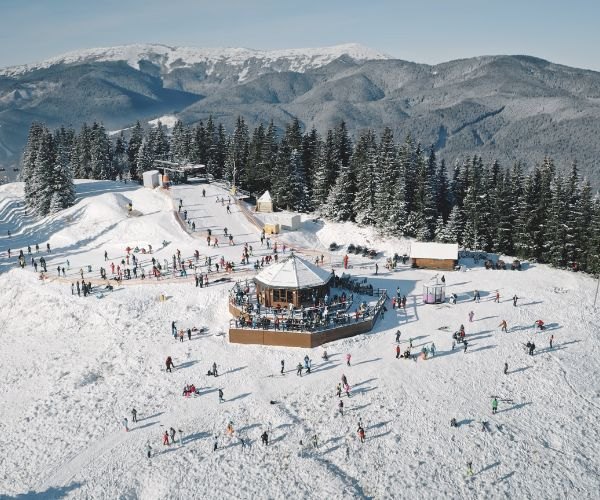
Before diving into the resorts themselves, it’s worth outlining what makes a destination stand out. When comparing Austria’s ski resorts, these are the main factors to consider:
- Size & Terrain: Piste kilometres, vertical drop, and linked ski areas.
- Altitude & Snow Record: Snow reliability, glacier access, and snowmaking facilities.
- Accessibility: Proximity to airports, train links, and transfer times.
- Village Character: Traditional charm, après-ski, and nightlife.
- Price & Value: Lift pass costs, accommodation, and overall affordability.
- Suitability: Whether the slopes favour beginners, intermediates, or advanced skiers.
These criteria can make or break a ski trip. A beginner-friendly family holiday in Alpbach will look very different from an adrenaline-fuelled trip to St. Anton and understanding what each resort offers ensures you’ll get the most from your time on the slopes.
Top ski resorts in Austria
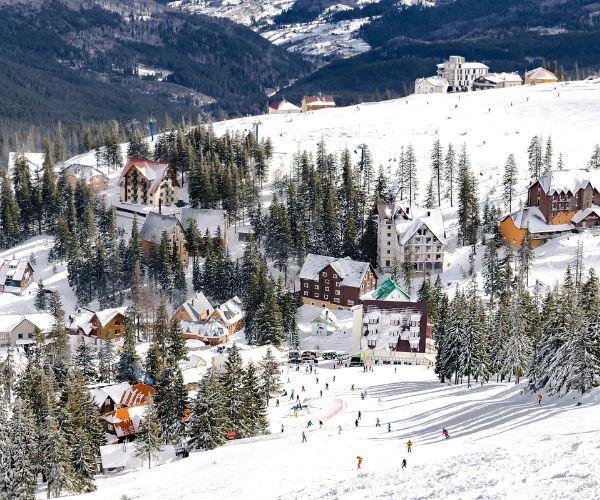
Ski Arlberg (St. Anton, Lech, Zürs & More)
Austria’s largest linked ski area, Ski Arlberg covers more than 300 km of pistes and 111 lifts. St. Anton is world-famous for its advanced terrain and buzzing après-ski, while Lech and Zürs offer a more luxurious, quieter vibe. The altitude ensures good snow, and St. Anton even has a direct train station, making transfers easy.
What makes Ski Arlberg unique is its sheer variety. Advanced skiers can test themselves on challenging black runs and legendary off-piste, while intermediates will enjoy cruising the reds between Zürs and Lech. For non-skiers or those wanting a break, Lech has horse-drawn sleigh rides, boutique shops, and fine dining.
Pros: Huge terrain, strong snow record, excellent après-ski, luxury villages.
Cons: Expensive, crowded in peak weeks.
Best for: Advanced skiers, luxury travellers, and lively après-ski.
Sölden & Obergurgl
Sölden combines glacier skiing with a lively nightlife scene, attracting a younger, energetic crowd. Its two glaciers, Tiefenbach and Rettenbach, make it a safe bet for snow. Just up the valley, Obergurgl and Hochgurgl sit at higher altitudes and are among Austria’s most snow-sure resorts. They are quieter and more upmarket, offering an excellent option for intermediates who value snow reliability over nightlife.
Obergurgl is often described as the “Diamond of the Alps,” with slopes stretching from 1,800 m to over 3,000 m. Families love its uncrowded pistes, while couples appreciate the stylish hotels and spas. Sölden, meanwhile, hosts the Alpine Ski World Cup opener every October, giving it an early start to the season.
Pros: Snow-sure glaciers, mix of nightlife and quieter options, modern lifts.
Cons: Longer transfer from airports, pricey compared to smaller resorts.
Best for: Guaranteed snow, intermediates, and skiers wanting both après and altitude.
Kitzbühel
Perhaps Austria’s most famous ski town, Kitzbühel is steeped in history and hosts the legendary Hahnenkamm downhill race. With around 230 km of pistes, it’s ideal for intermediates. The medieval town is packed with charm and après-ski options, though the relatively low altitude means snow can be less reliable in late season. Kitzbühel also benefits from having its own train station, making it one of the easiest resorts to reach.
Kitzbühel isn’t just about skiing—it’s about lifestyle. Luxury hotels, boutique shopping, and Michelin-starred dining make it appealing to non-skiers, too. The ski pass even includes access to neighbouring SkiWelt, opening up even more terrain.
Pros: Beautiful town, famous ski history, easy access, strong intermediate terrain.
Cons: Lower altitude, late-season snow risk, higher-end prices.
Best for: Skiers who want history, charm, and prestige.
Ischgl
Ischgl is famous for its modern lift system, snow-sure slopes, and an après-ski scene that’s the stuff of legend. The terrain leans towards red runs, making it perfect for confident intermediates. The resort is also known for its huge music concerts on the slopes, which attract international artists.
Unlike some Austrian resorts, Ischgl feels like a self-contained world. Everything from luxury hotels to mountain huts buzzes with energy, making it a magnet for groups of friends. The Silvretta Arena ski area also links across the Swiss border, adding variety to your lift pass.
Pros: Reliable snow, world-class après-ski, modern lifts.
Cons: Not ideal for beginners, can feel hectic and expensive.
Best for: Groups, party lovers, and strong intermediates.
Hintertux Glacier
Austria’s only year-round ski resort, Hintertux offers snow-sure glacier skiing up to 3,250 m. While the village is quiet, the skiing is unbeatable for snow reliability. It’s particularly popular for late-season trips or as a backup plan when lower resorts start to lose snow.
The glacier’s wide open runs are ideal for carving, and it’s also a hub for professional ski teams who train here outside of winter. For families, Hintertux offers an indoor adventure park and ice palace within the glacier itself.
Pros: Year-round skiing, snow guarantee, great for training.
Cons: Smaller ski area compared to big resorts, quieter nightlife.
Best for: Snow guarantee, late-season skiing, and serious enthusiasts.
Hidden gems & smaller resorts
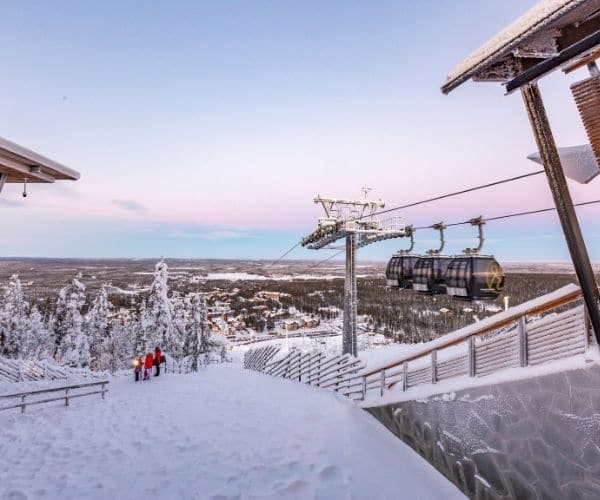
Not every skier is looking for vast areas. Some of Austria’s smaller, lesser-known resorts combine charm, affordability, and great snow:
- Damüls-Mellau: Often called the snowiest village in the world, with a traditional alpine feel.
- Filzmoos: A small, family-friendly resort perfect for beginners who don’t want crowds.
- Maria Alm: Traditional atmosphere with access to the Hochkönig ski area, ideal for a relaxing holiday.
- Nassfeld: Southern Austria’s biggest resort, offering 110 km of pistes, reliable snow, and fewer international crowds.
These resorts may not have the same name recognition, but they’re excellent choices for families, first-timers, or travellers seeking authentic Austrian culture.
Best ski villages in Austria
If the village atmosphere is just as important as the skiing, Austria has some of the most picturesque alpine towns in Europe:
- Lech: Luxury and exclusivity, with strict building regulations maintaining its charm.
- Alpbach: Regularly voted Austria’s prettiest village, offering access to the Ski Juwel area.
- Ellmau: A welcoming, family-friendly base in the vast SkiWelt region.
- Maria Alm: Scenic and peaceful, with a traditional Austrian feel.
Each village offers something unique. Lech caters to the high-end crowd, Alpbach enchants with its chocolate-box houses, while Ellmau is a firm favourite for families thanks to its ski schools and easy slopes.
Cheapest ski resorts in Austria
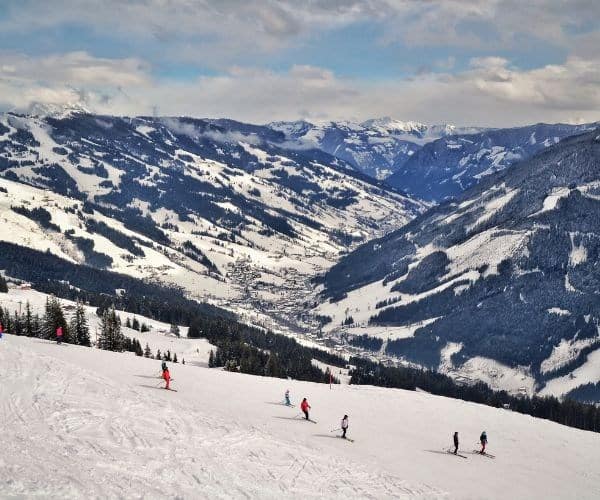
Austria is already good value compared to France and Switzerland, but some destinations stand out for affordability:
- SkiWelt Wilder Kaiser-Brixental – Huge ski area, but more affordable than Arlberg.
- Silvretta Montafon – A large resort with fair lift pass prices.
- Wildkogel-Arena – Smaller, family-focused, and budget-friendly.
- Filzmoos & Maria Alm – Affordable lodging and authentic Austrian experiences.
To put it in perspective, a six-day lift pass in SkiWelt is often 20–30% cheaper than in St. Anton or Lech. Combine that with competitively priced guesthouses and hearty, inexpensive mountain meals, and you’ve got a ski trip that won’t break the bank.
Money-saving tips:
- Travel outside school holidays.
- Stay in guesthouses or apartments instead of hotels.
- Pre-book lift passes and rentals online.
- Consider self-catering to reduce food costs.
Accessibility & transfers
Austria excels in accessibility compared to many Alpine nations. Innsbruck and Salzburg airports sit close to major ski regions, while Munich and Zurich also serve Austrian resorts with efficient transfer links.
- Easiest by train: St. Anton and Kitzbühel, both with direct stations.
- Short transfers: SkiWelt and Zillertal resorts are within an hour of Innsbruck.
- Longer but rewarding: Obergurgl, Ischgl, and Hintertux require longer journeys but make up for it with altitude and snow reliability.
This strong infrastructure makes Austria especially appealing for long weekends and shorter trips, as you can get from airport to slopes much faster than in many French or Swiss resorts.
Best resorts by ski level
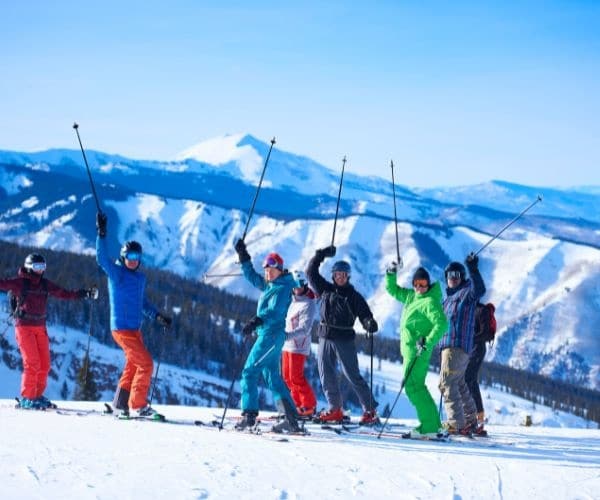
Austria’s variety means there’s something for everyone:
- Beginners & Families: SkiWelt, Serfaus-Fiss-Ladis, Obertauern.
- Intermediates: Kitzbühel, Ischgl, Saalbach-Hinterglemm.
- Advanced & Off-Piste: St. Anton, Silvretta Montafon, Pitztal, Kaunertal.
For families, resorts like Serfaus-Fiss-Ladis stand out thanks to dedicated children’s areas, excellent ski schools, and family-friendly accommodation. Advanced skiers, meanwhile, gravitate toward St. Anton for its challenging off-piste terrain.
Final thoughts: which resort is best for you?
There’s no single “best” ski resort in Austria. Instead, it depends on your priorities:
Traveller type | Recommended resort(s) |
Luxury & charm | Lech, Kitzbühel |
Snow guarantee | Hintertux, Obergurgl |
Best value | SkiWelt, Silvretta Montafon, Wildkogel-Arena |
Families | Serfaus-Fiss-Ladis, Ellmau |
Advanced/off-piste | St. Anton, Silvretta Montafon |
Whether you’re chasing champagne powder, charming villages, or simply a good-value ski week, Austria has a resort to match. If snow reliability is your main concern, check our guide on ski resorts with the best snow in April. And if you’re a first timer, don’t miss our beginner’s guide to Austrian resorts.
Get Ski Insurance with SportsCover Direct
Heading to the slopes? Ski insurance gives you all the standard travel protection plus specialist cover designed for winter sports – so you can focus on enjoying your trip without worrying about unexpected costs.
With SportsCover Direct, you can tailor your ski insurance to match your chosen activities, from downhill to more adventurous disciplines, just select the options you need when requesting a quote.
Our comprehensive policy includes protection for medical emergencies, cancellations, personal liability, lost or damaged equipment, search and rescue, and even off-piste skiing, as long as you follow local guidance.
Explore our specialist ski insurance today and get a quick quote in minutes.
This blog has been created as general information and should not be taken as advice. Make sure you have the correct level of insurance for your requirements and always review policy documentation.